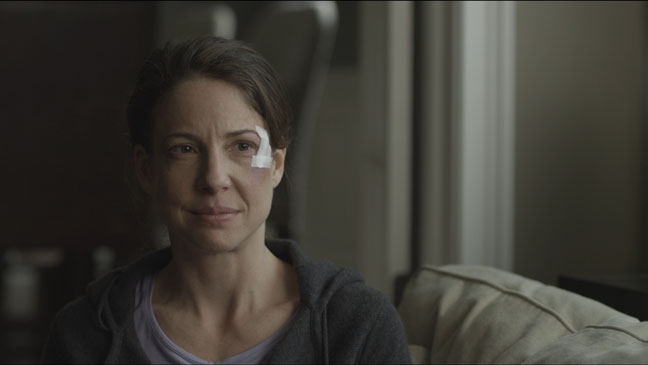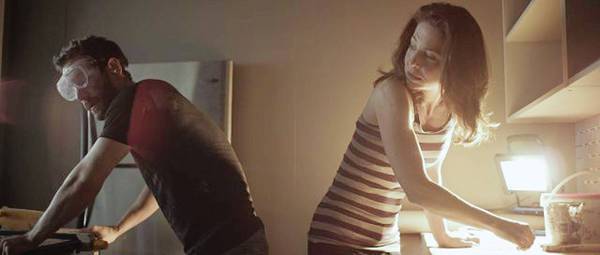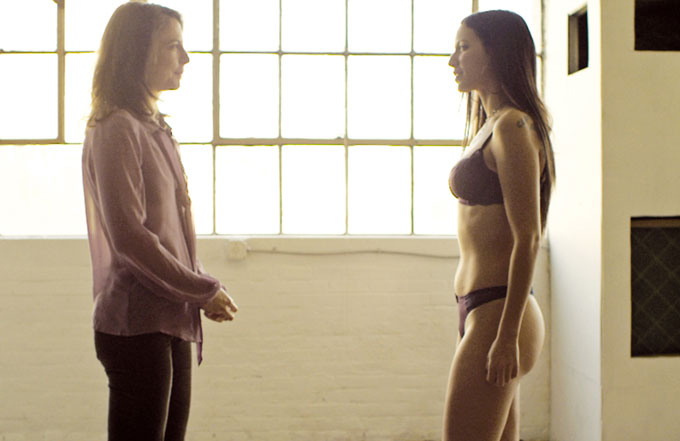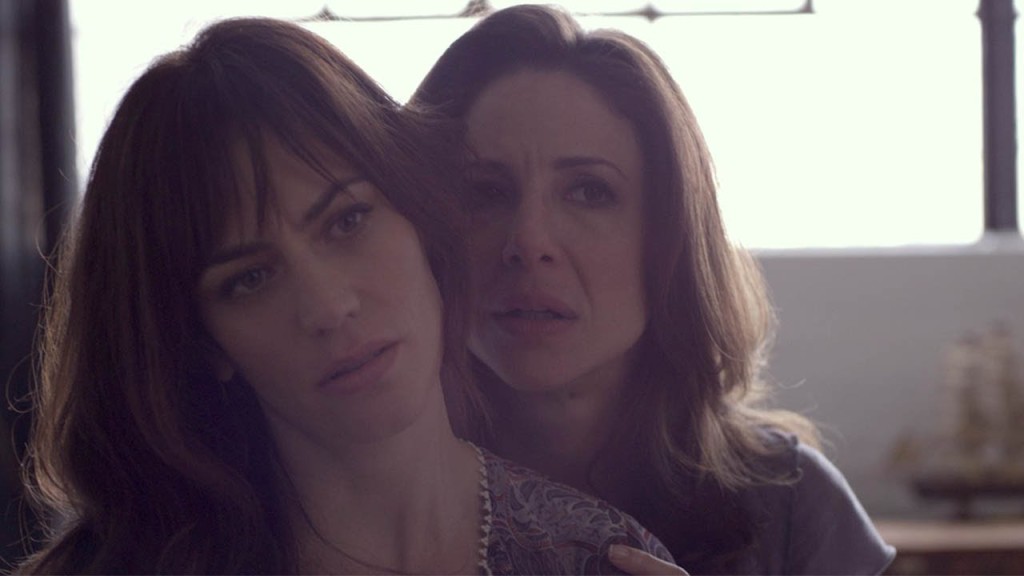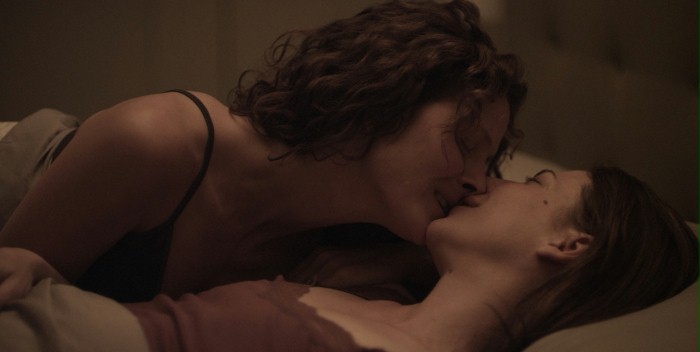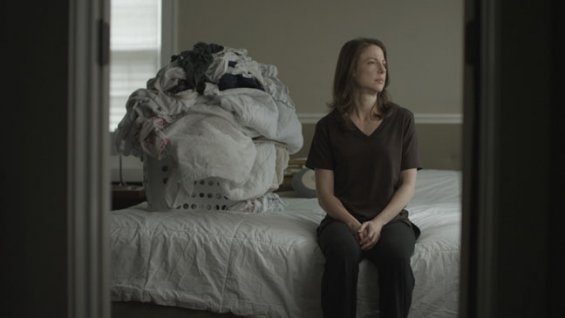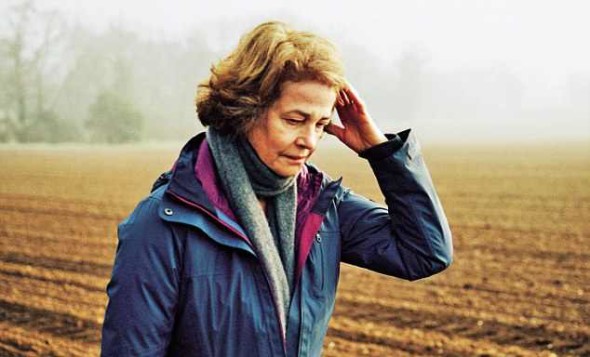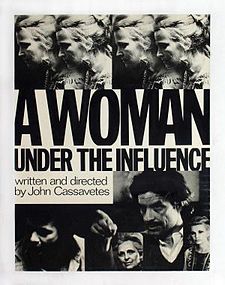This repost by staff writer Ren Jender appears as part of our theme week on Women Directors.
How many distinctive, acclaimed films about queer women can be released in American theaters at the same time? If we extrapolate from the actions of film distributors in 2013, the answer is apparently: only one. Concussion was named one of the top 20 films of that year by Slate’s Dana Stevens and was also named one of the top films of 2013 in Salon. Shortly after its premiere, at Sundance, The Weinstein Company acquired it for distribution. For most films that acquisition (and the later support from reviews in traditional media) would mean a national release, but the film had a very limited run in theaters that fall and never played a theater in my art-house-friendly city. The film was on Video On Demand, iTunes, and Google Play, but deserves much more attention than most films that never have a national theatrical run.
This film about a queer woman is, unlike the same year’s Blue Is The Warmest Color, directed and written by a queer woman (Stacie Passon who was nominated for “Best First Feature” in the Independent Spirit Awards and directed an episode of this past season of Transparent) and in many aspects is the answer to those who dismissed Blue as a product of the male gaze. Instead of a teenage protagonist, the main character in Concussion, Abby (played by Robin Weigert: Andrew O’Hehir in Salon summed up her performance as “OMFG”), is a 40-something, stay-at-home Mom, married to another woman and living in the suburbs.
When her son accidentally hits her in the face with a baseball, we see the confusion and blood in the family car ride to the hospital, as she moans to no one in particular, “I don’t want this. I don’t want this. I don’t want this.”
In the ER Abby says she is going back to work in the city (and that she really means it this time). Abby doesn’t need to work for money: her spouse, Kate, is a divorce attorney, kept busy by the dissatisfied wives in their social circle. We see the wives’ well-maintained bodies in slow motion, at the beginning of the film, in spin and yoga classes as David Bowie sings on the soundtrack, “Oh you pretty things…”
Passon knows this world well She lives in the town (Montclair) Abby does. She is married to a woman and has children, one of whom accidentally hit her in the face with a baseball. The parallels between her life and Abby’s may be why the character and setting seem so fully realized.
Abby for the most part blends in with her straight women friends but we see she’s different from them–and not just in her orientation. She reads books while she vacuums. When a friend is circulating a “new motherhood” survey for an article in a parenting magazine, Abby writes of dreams in which she sticks her then newborn son in the microwave–and other dreams in which she and her son are married. She writes, “My poor baby, I didn’t know whether to kill him, fuck him, or eat him.”
At times Abby’s queerness does separate her from the other women. When Abby mentions to her friend that one of the group of women they work out with is “cute,” the friend (played by Janel Maloney) reproaches Abby, “She’s not a lesbian!”
Abby starts work with a contractor to refurbish a city loft. As they transform the apartment, she transforms too, first hiring women to have sex with her and then working out of the loft as a high-priced escort, “Eleanor,” whose clients are all women.
A woman character turning to sex work for reasons other than money is usually a male artist’s conceit, as in Luis Buñuel’s great Belle de Jour, which features stunning, beautifully dressed, doctor’s wife, Catherine Deneuve, working in a brothel while her handsome, attentive (but clueless) husband sees his patients. In women’s memoirs of sex work (like Michelle Tea’s Rent Girl) the money is the point of the work (as it is with most work).
A sex worker character whose clients are all women (when the vast majority of sex work clients are men) is also usually the creation of a straight male artist–and is usually a male character so the work avoids any explicit same-sex scenes.
Perhaps because Concussion turns that last trope on its head (or perhaps because New York is a big city that can cater to many kinds of tastes) we accept the conceit of a woman over 40 seeing women clients (for $800 a session) every day. The queer women we see in sexual situations in Concussion are not cut from the same Playboy-ready cloth as the two women in Blue: one client is fat, another is an obvious real-life survivor of breast cancer and some of her clients, like Eleanor herself, are nowhere near their 20s anymore.
Robin Weigert doesn’t have a Barbie Doll face or a porn model’s body, but does have a passing resemblance to the young Ellen Barkin. Weigert exudes the same confidence and sexiness–reminding us those two qualities are often one and the same.
Concussion has a scene similar to one in Blue in which a straight man interrogates a queer woman about her sexuality. But because Abby is in her 40s, the mocking tone she takes with him is completely different from what we hear from the 20-something main character in Blue, Adele.
In Concussion are we seeing the female gaze? Well, we’re definitely seeing one woman’s gaze, that of Passon. The sex scenes in Concussion, unlike Blue, don’t seem like outtakes from an amateur porn video, but flow from the other nonsexual encounters in the film. (Concussion’s expert cinematographer is David Kruta.) We also don’t see full frontal nudity from any of the actresses, and although we see the bare breasts of some of Eleanor’s clients, we never see hers. Eleanor/ Abby is both a psychological and corporeal enigma to us.
Some clues for her motives are in the scenes between Abby and her spouse. They are affectionate and loving with each other, even when they’re alone, but the sex has gone out of their marriage. After a disastrous first encounter with an escort, we feel Abby’s ache of longing when a second “better” escort begins to touch her. Later we see Eleanor’s first client, a 23-year-old virgin, react to Eleanor’s touch in much the same way.
In the city we see Abby in punk rock t-shirts (vintage Blondie and the now-defunct C.B.G.B) and boyshort underwear and in the suburbs we see her fitting in with her friends in yoga pants and an expensive down-filled jacket. At a suburban dinner party the guests talk about their days hanging out in pre-gentrified downtown New York clubs, Squeezebox and The Limelight, and we realize yes, many of the club kids of the ’90s have become comfortable, suburban Moms and Dads.
The loft is decorated with posters for Louise Bourgeois and The Guerrilla Girls and has Diet For a New America on the bookshelf, distinct touches some of us in the audience recognize from our own living spaces. In the dialogue we hear echoes of conversations we too have had (or overheard) at parties: “I finally took the Myers-Briggs.” Writers of satire often seem to want their audience to hate the people, especially the women, they create (the Annette Bening character in American Beauty is just one example). Passon’s satire is much trickier–and kinder. She wants us to recognize these people. She wants us to recognize ourselves in them.
The film Passon says inspired Concussion is from the 1970s: Jeanne Dielman.., (and was also written and directed by a queer woman, the late Chantal Akerman). In Concussion, as in Dielman, we see the first signs of the housewife/sex-worker protagonist starting to unravel when she fails to stick to her usual daily routine: Abby misses picking up the kids after school for the first time in six years. Unlike Dielman, Passon’s film captures the monotony of domestic tasks, but doesn’t ask the audience to endure that boredom themselves.
Although Concussion was made before queer marriage became legal in New Jersey, the film brings up some interesting questions about the queer community’s quest for “equality.” What if we become just as disenchanted with being soccer Moms as straight women sometimes do? What then? At the end Abby throws herself into a home renovation project, the way so many of our married friends, straight and queer do, and we marvel at the mystery of other people’s marriages, not just in the film, but all around us.
[youtube_sc url=”http://www.youtube.com/watch?v=S8Wg–Mh8YY” iv_load_policy=”3″]
Ren Jender is a queer writer-performer/producer putting a film together. Her writing. besides appearing on Bitch Flicks, has also been published in The Toast, RH Reality Check, xoJane and the Feminist Wire. You can follow her on Twitter @renjender.


